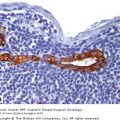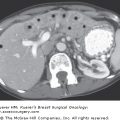Given the accumulating evidence documenting the efficacy of genetic screening and risk-reduction interventions, genetic cancer risk assessment (GCRA) has become a medical standard-of-care option for persons with a personal and/or family history of cancer suggestive of increased cancer risk.1-5 GCRA utilizes rapidly evolving genetic technologies along with established empiric risk models to estimate cancer risk and provide age- and risk-level appropriate cancer prevention and risk-reduction strategies for individuals and their family members. The ultimate value of GCRA is the opportunity for initiation of early detection or risk-reducing strategies that would be most effective in minimizing cancer incidence, morbidity, and mortality, by identifying persons at increased cancer risk prior to the onset of an initial or subsequent cancer.
The GCRA process includes assessing personal and family medical history and family structure6 to determine individual cancer risks and the probability of an inherited genetic trait accounting for cancer in an individual and/or the individual’s family and counseling about the appropriateness, benefits, limitations, risks, and process of genetic testing and subsequent health care implications. If genetic testing is undertaken and a deleterious mutation identified, single-site mutation testing in other at-risk family members adds relatively little cost while maximizing benefits to families by distinguishing relatives at high risk from those at modest or average risk. Relatives who did not inherit the familial mutation can then be spared the personal and economic cost of unnecessary interventions.7
The greatest experience and application of GCRA to date is in the evaluation of hereditary breast cancer. Quantification of risk from informative genetic testing enables women to choose among risk-reducing interventions such as chemoprevention, mastectomy, and/or bilateral salpingo-oophorectomy, enhanced and earlier surveillance, and healthier lifestyle choices.8-20 For patients who undergo genetic testing but do not have a detectable cancer-associated mutation, who decline testing, or are unable to proceed with genetic testing due to financial or other reasons, a variety of empiric risk models may be used to quantify risk and provide individualized recommendations for cancer screening and risk-reduction. Similarly, the discovery of other single genes involved in early onset-colon cancer or other heritable cancer-associated syndromes (eg, multiple endocrine neoplasia) enables prevention, risk-reduction, or earlier diagnosis of cancer through identification of high-risk individuals. As such, GCRA has an important role in guiding patient decision-making.4,17,18 Recognizing the value of GCRA, genetic counseling and testing was added as a supportive service to the 2004 American College of Surgeons (ACS) Commission on Cancer, Cancer Program Standards.21 Consequently, community-based cancer centers are integrating GCRA into oncology care. State-of-the-art quality care, including access to innovative research, may be achieved by partnering with a comprehensive cancer center with a robust GCRA program.22 This chapter describes essential components of a cancer genetics service and various models of service delivery utilized by community centers affiliated with a cancer genetics center of excellence.
Compliance with the ACS Cancer Program Standards and increasing consumer demand has fueled community cancer centers’ interest in offering GCRA services. Prior to implementation, the purpose, goals, scope of service, and plans for operating, integrating, marketing, and evaluating the cancer genetics service must be defined. While the ultimate purpose of a cancer genetics service is to minimize cancer incidence, morbidity, and mortality, the more immediate purpose would be defined by the practice setting, considering community needs and available resources. Goals requisite for a state-of-the-art clinical cancer genetics service that respects the personal and family implications of GCRA while advancing scientific knowledge are depicted in Table 7-1 and discussed throughout this chapter. The steps in establishing a cancer genetics service are outlined in Table 7-2.
|
|
An essential initial step in establishing a viable GCRA program is to determine needs of the target population and potential barriers to implementation and success.23 A culturally sensitive and linguistically appropriate anonymous survey distributed to patients attending oncology and general medicine clinics is a cost-effective and efficient means of obtaining information about interest in participating in cancer genetics services and uncovering potential service barriers, including psychosocial barriers related beliefs, knowledge, and risk perception.19 For instance, a belief that cancer cannot be prevented, or lack of knowledge about genetics as a factor in cancer causation, may lessen interest in and deter uptake of genetic counseling and appropriate risk-management interventions. Educational sessions, fliers, and fact sheets could help address these barriers as well as inform the community and clinic/institution staff about the benefits of a cancer genetics service.
Engaging institutional support for a cancer genetics service is crucial to service development and implementation. The addition of this service enhances the institution’s reputation, differentiates it from its competition, and may also attract philanthropic support.24 Further, apprising breast center administrators about expected revenue, including potential downstream revenue from cancer screening, chemoprevention, and surgical risk-reduction interventions, may help to justify under-reimbursed costs.22,24
Similar to other medical fee-for-service health care, most cancer genetics patients will be referred by their health care provider. Garnering clinician support from these gatekeepers and medical directors who approve requests for genetic consultations/testing will greatly influence the acceptability of a cancer genetics service. Means to do so include providing continuing medical education (CME) lectures related to the need for this service and how the service will benefit patients, families, and the breast center, and meeting with key clinicians to gain their input and enthusiasm and act as “champions” for the cancer genetics service.
The scope of services provided are primarily dependent upon institutional support, staff expertise and availability, practice setting, availability for consulting with genetic experts, funding, and community needs/interest. Currently, the majority of patients referred for GCRA are adult women with a personal and/or family history of premenopausal breast cancer. Given this, many community genetics programs are limited to breast cancer while more comprehensive risk assessment programs at most NCI-designated Comprehensive Cancer Centers encompass many adult- and childhood-onset cancer genetics syndromes (eg, Lynch syndrome, also known as hereditary nonpolyposis colon cancer [HNPCC] or multiple endocrine neoplasia [MEN]).25
Accurate risk assessment requires thorough knowledge of cancer etiology, natural history, treatment, age-specific penetrance, genotype-phenotype correlations, genetic heterogeneity, modifiers of penetrance and expression, and the availability, accuracy, and predictive value of clinical and research-based genetic tests. For example, not knowing that a reported “female” cancer at age 31 is unlikely to be an epithelial ovarian cancer could lead to inaccurate risk assessment and inappropriate interventions. Similarly, lack of awareness of breast cancer–associated germline mutations other than the BRCA genes (eg, the PTEN gene), might result in false reassurance from uninformative (negative) BRCA testing. Thus, a multidisciplinary team of genetic counselors, oncology nurses, and physicians with specialized training in clinical cancer genetics is indispensable to accurate risk assessment and appropriate risk management recommendations.5
Support personnel for a high-quality GCRA program would also include psychologists/social workers, research staff to coordinate related studies, and a clinic coordinator to schedule patient appointments using a standard intake form to ensure referrals are appropriate, notify referring clinicians of appointments, mail standard genetics medical and family history forms, establish and maintain patient records, and facilitate collection of pathology and/or medical reports prior to patient appointments. Considerations in staff roles/responsibilities are listed in Table 7-3.
Define Who Will:
|
Typical time for GCRA includes approximately 2 hours to conduct the initial appointment and 1 hour for follow-up visits, with additional time for pre- and postappointment information and medical record-gathering; completing clinical, research, and test request forms; obtaining, preparing, and sending out blood or tumor specimens for genetic tests; facilitating insurance authorization for testing and/or consultation visits; preparing clinical notes; and expert case review for consensus regarding risk assessment and management strategies.
Persons seeking cancer risk consultations often have a significant psychological burden (fear, anxiety, etc.) associated with cancer experience in their family. Consequently, a waiting area and consultation room that has limited exposure to patients in the midst of cancer treatment may minimize stress associated with GCRA. As patients often bring family members to the consultation, the room should be large enough to accommodate several family members and the genetics staff. An exam room is also needed for a genetics-focused exam (eg, performing a breast exam and teaching breast self-exam; measuring head circumference; thyroid palpation; and evaluation of other physical features characteristic of specific heritable cancer syndromes).









